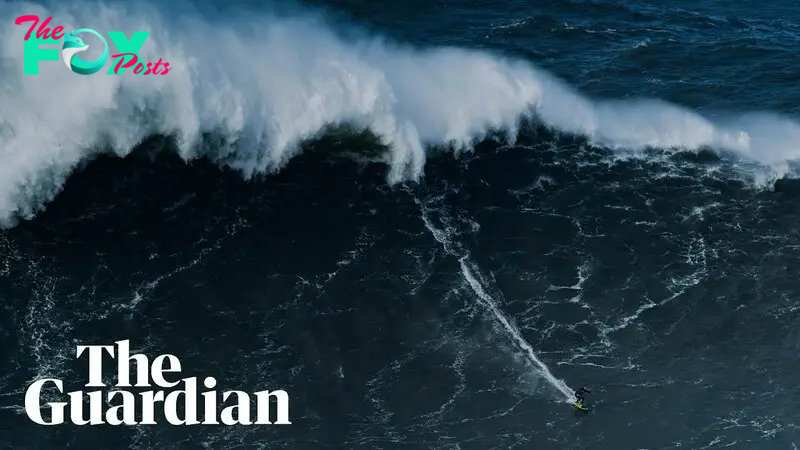Science
Nazaré: The big-wave surfer's paradise born out of the largest underwater canyon in Europe
Name: Nazaré
Location: Portugal
Coordinates: 39.60456272264274, -9.084987229844717
Why it's incredible: The coastal town hosts the world's biggest surfable waves.
Nazaré is a hotspot for monster waves on the Portuguese coast. Every year, between October and March, "big-wave" surfers hit the small fishing town during an annual peak in wave size, when the water regularly surges five stories high — and occasionally reaches twice as high.
Due to its enormous crests, Nazaré is the place to be for record-breaking surfers. In April 2024, German surfer Sebastian Steudtner likely set a new world record for the largest wave ever surfed when he took on a behemoth provisionally measured at 93.73 feet (28.57 m) tall. The record has yet to be officially ratified, but if it is validated, Steudtner will have supplanted his own current world record of 86 feet (26.21 m), which he set in 2020. The two previous world records of 80 feet (24.4 m) and 78 feet (23.8) were also achieved at Nazaré in 2017 and 2011, respectively.
Related: Gargantuan waves in Earth's mantle may make continents rise, new study finds
In October 2020, 18-year-old Portuguese surfer António Laureano rode a gigantic wave at Nazaré that researchers later estimated was 101.4 feet (30.9 m) tall. However, this attempt was never officially ratified by the World Surf League due to the method used by the scientists to calculate the wave's height.

The waves at Nazaré reach such giant proportions because they form inside the Nazaré Canyon — the largest submarine canyon in Europe, which stretches 130 miles (210 kilometers) long and roughly 3 miles (4.8 km) deep in the Atlantic Ocean southwest of Nazaré.
Water inside the canyon Travels faster than shallower water, forming large waves at depth that are "bent" in the direction of Nazaré, according to NASA's Earth Observatory. As they approach the coast, these large waves run into waves coming from the northwest, and this collision forms the truly supersize waves that surfers prize.
—Rainbow swamp: The flooded forest in Virginia that puts on a magical light show every winter
—Gateway to the underworld: The enormous permafrost 'megaslump' in Siberia that keeps getting bigger
—White Shark Café: The mysterious meeting spot for great whites in the middle of the Pacific Ocean
Nazaré churns out some jumbo waves, but it's not the site of the biggest wave ever recorded. That title belongs to Lituya Bay in Alaska, which produced a frightening 1,719-foot-tall (524 m) wall of water after an earthquake triggered a landslide directly into the bay in July 1958. That wave killed five people and leveled trees on the slopes surrounding the bay.
-

 Science3d ago
Science3d agoInside Capitol Hill’s Latest UFO Hearings
-

 Science3d ago
Science3d agoYou Won’t Want to Miss the Leonid Meteor Shower. Here’s How and When You Can See It
-

 Science3d ago
Science3d agoHere’s What Trump’s Win Means for NASA
-

 Science1w ago
Science1w agoWhy Risky Wildfire Zones Have Been Increasing Around the World
-

 Science1w ago
Science1w agoIt’s Time to Redefine What a Megafire Is in the Climate Change Era
-

 Science1w ago
Science1w ago4 Astronauts Return to Earth After Being Delayed by Boeing’s Capsule Trouble and Hurricane Milton
-

 Science1w ago
Science1w agoThe Elegance and Awkwardness of NASA’s New Moon Suit, Designed by Axiom and Prada
-

 Science2w ago
Science2w agoSpaceX Launches Its Mega Starship Rocket. This Time, Mechanical Arms Catch It at Landing



























